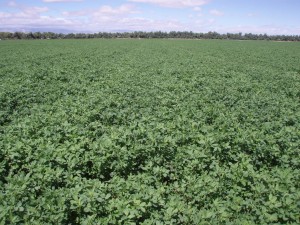Everything that Adán and Pilar Trujillo, two siblings from Chimayó, New Mexico, do on their farm connects with the community. Their lettuce fed students at the local McCurdy Charter School last year. They sell their rhubarb, rainbow chard and red Russian kale at the community market just down the road in Española. And their chile will be roasted and eaten this fall by children in schools nearby.
Though they can trace their family heritage back to the original agrarian settlers in the area almost 300 years ago, Adán Trujillo didn’t decide to get into farming until he graduated college in 2004. With the help of a local co-op and conservation work, these young farmers are making a big impact in the Chimayó area.
However, despite the co-op’s success in supplying food to the local residents, a recent severe and extended drought gripping an already arid state made the Trujillos and other farmers in the co-op look to more efficient ways to irrigate.
“My father started talking to people and heard that USDA’s Natural Resources Conservation Service could help us get started with drip irrigation,” Adán Trujillo said.
The Trujillos and other members of the La Cosecha del Norte Co-op worked with NRCS to help them design, install, and partially pay for a drip irrigation system that helps deliver water efficiently to the roots of the crops and minimize water loss due to evaporation, a common problem with the traditional flood irrigation technique of the region.
“Drip irrigation has been so much more efficient and easier than flood irrigation,” Trujillo said. “It has saved us through the drought and we’re still able to irrigate once a week.”
Alongside drip irrigation, conservation has helped the Trujillos and the co-op members continue in their community mission.
Continue reading

